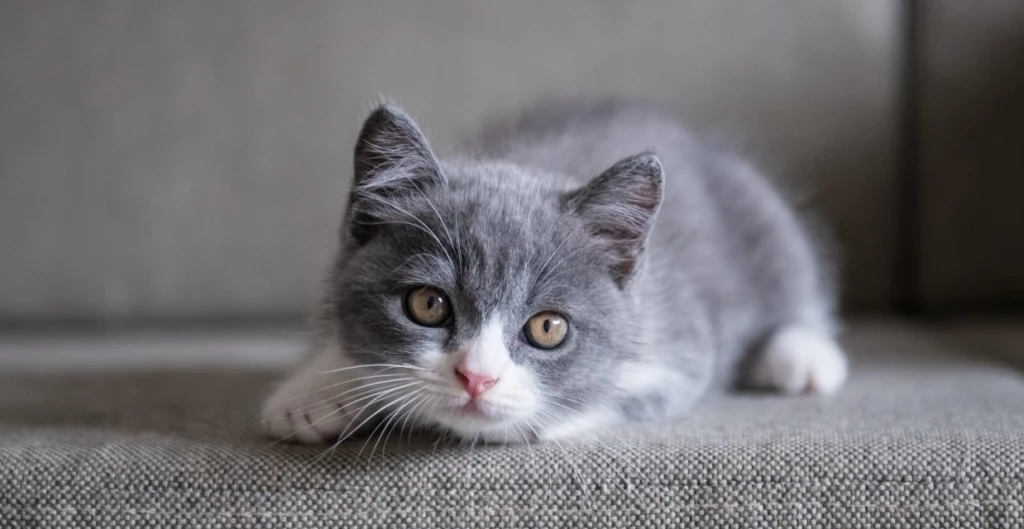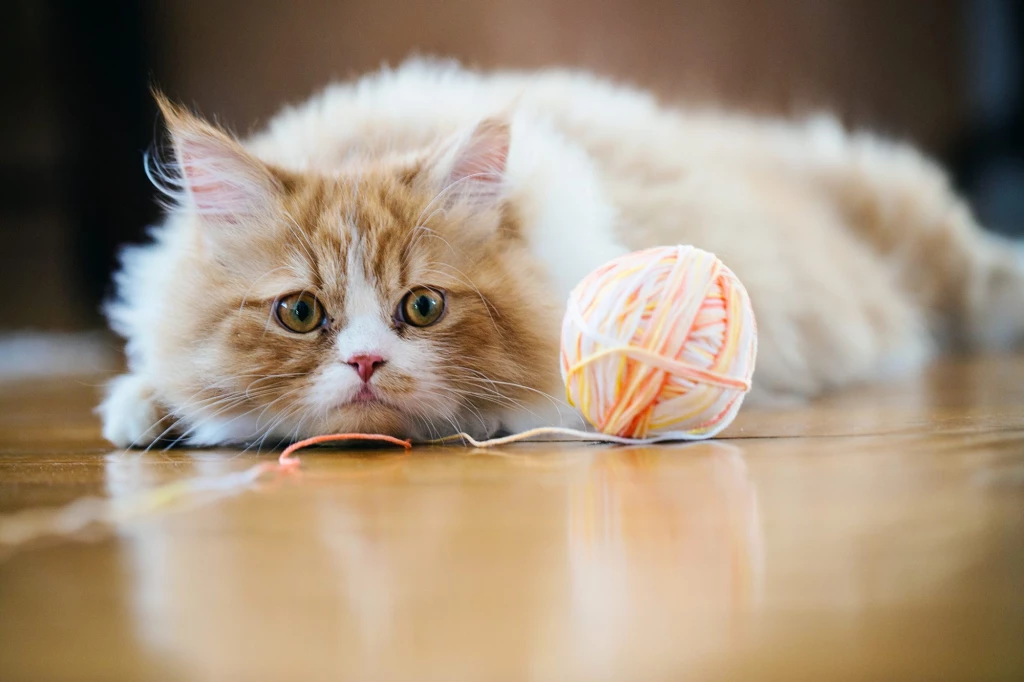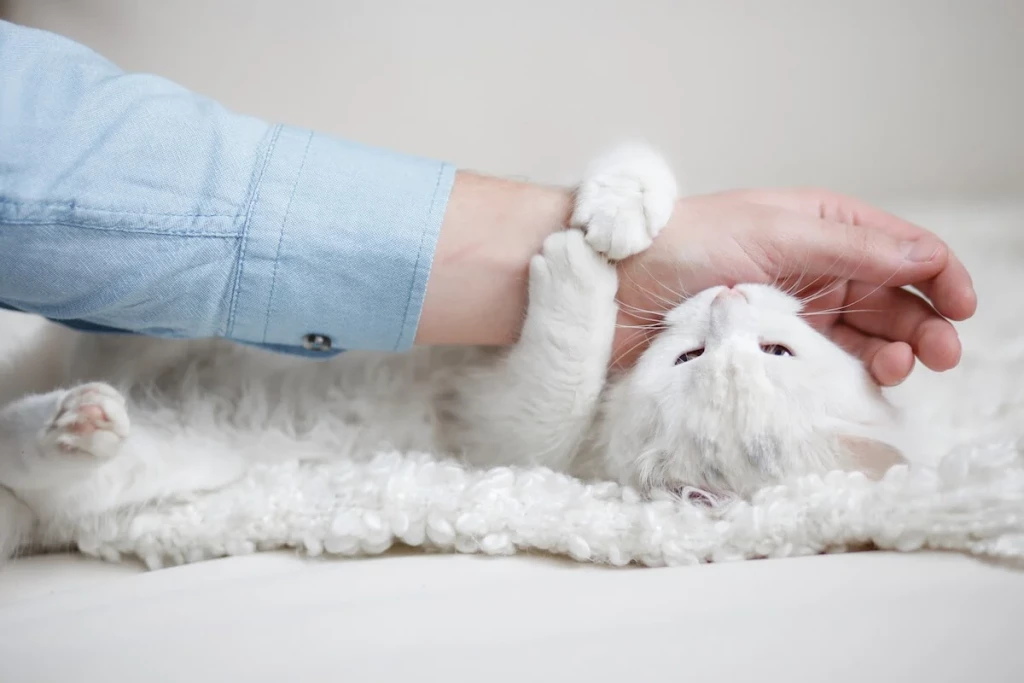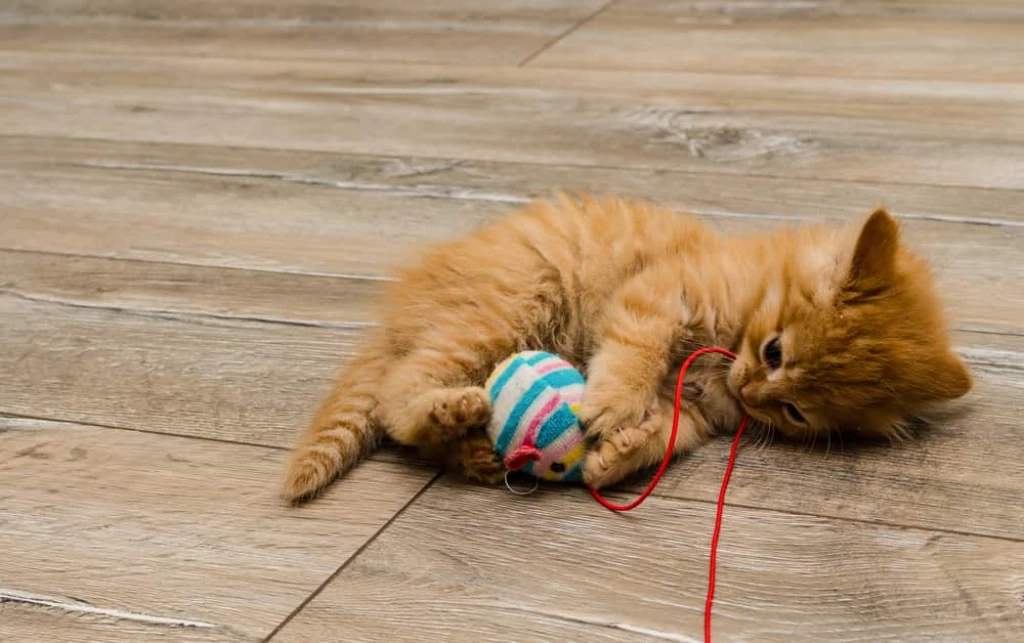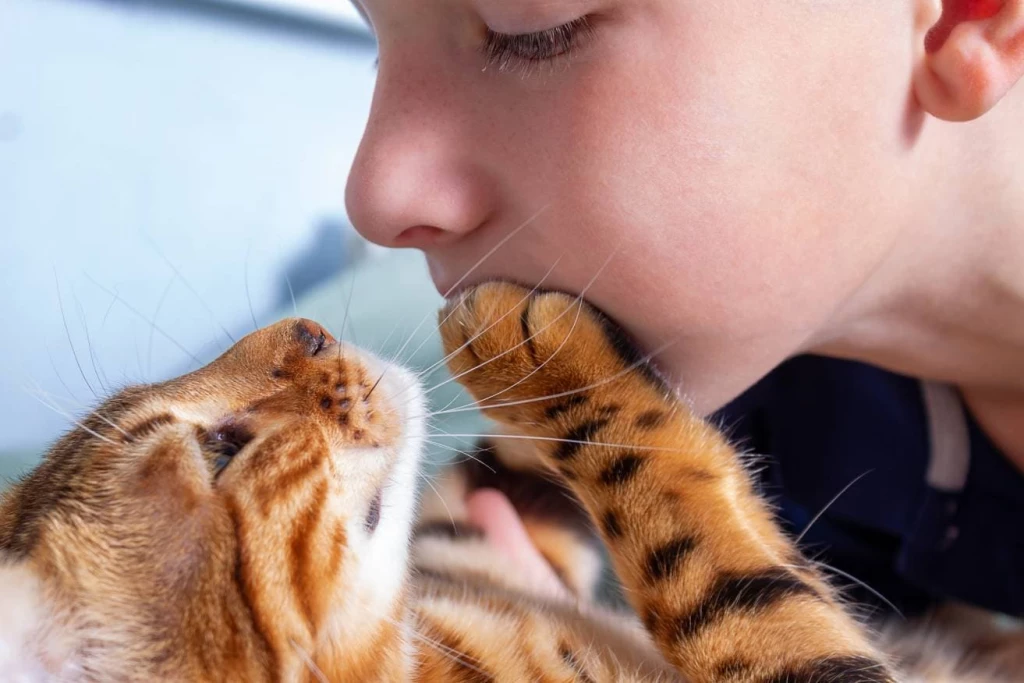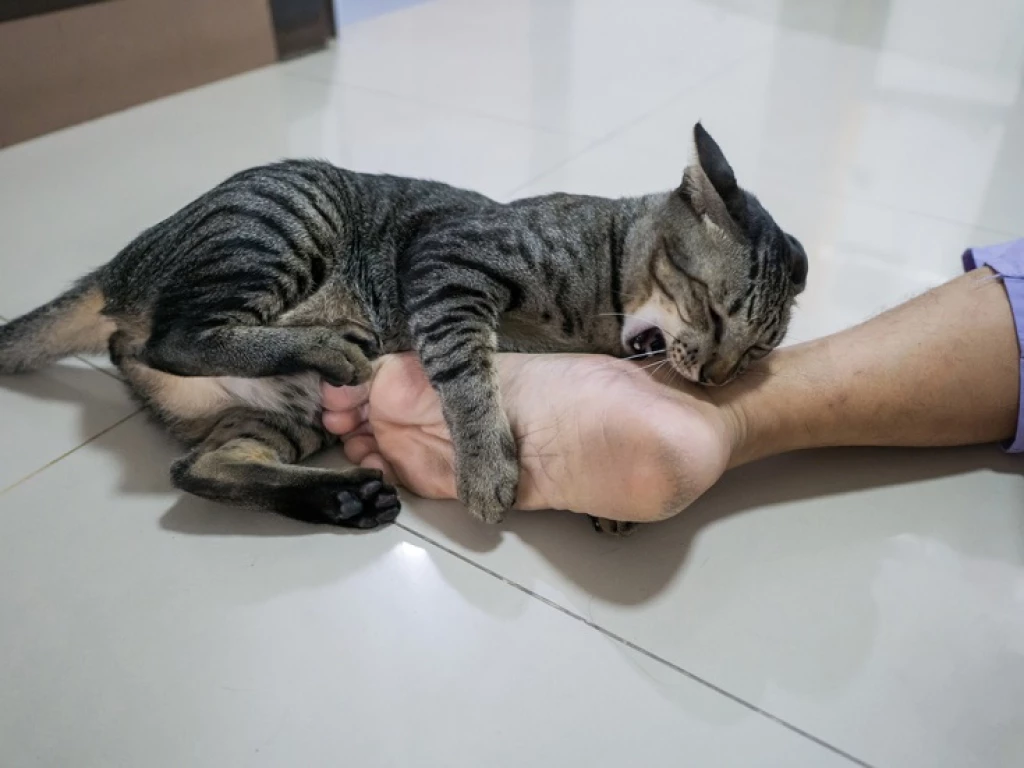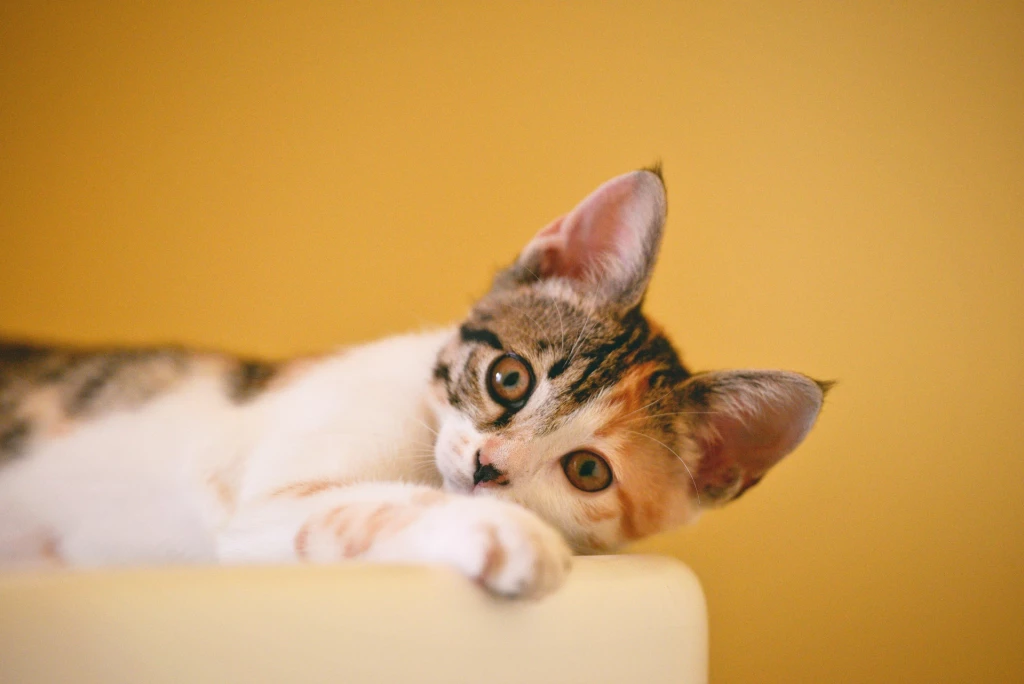Have you ever wondered why your cat is so small compared to other cats? Or maybe you have a friend who has a tiny feline that looks like a kitten even though it's fully grown. What could be the reason behind this phenomenon?
Cats come in different shapes and sizes, and they can vary in their growth rate and maturity depending on their breed, gender, health, and nutrition. Some cats are naturally smaller than others due to genetic or hormonal factors, while others may be small due to environmental or medical issues.
In this blog post, we'll explore some of the possible causes of small cats, from genetics to health problems, and how to ensure your cat is healthy and happy regardless of its size. We'll also share some stories and testimonials from owners of small cats who love their feline friends despite or because of their size.
Whether you have a small cat of your own or you're just curious about why some cats are so small, this blog post will answer all your questions and give you some useful tips on how to care for a small cat. Let's get started!
How To Measure Cat Body Condition Score
One of the first things you need to know if you want to understand why your cat is so small is when cats stop growing and what is their ideal weight and size. Cats are not all the same, and they can vary in their growth rate and maturity depending on their breed, gender, and genetics. However, most cats reach their adult size by 10-12 months of age, although some breeds may take longer or shorter to mature. For example, Maine Coons are one of the largest cat breeds and they can take up to 4 years to reach their full size. On the other hand, Singapuras are one of the smallest cat breeds and they can reach their full size by 6 months of age.
But how do you know if your cat is at a healthy weight and size for its frame? You can't just rely on the number on the scale, because that doesn't take into account your cat's body shape and composition. A better way to assess your cat's body condition is to use a tool called the body condition score (BCS). This is a scale from 1 to 9 that evaluates your cat's body shape based on its ribs, waist, and abdomen. A score of 4-5 is considered optimal, while a score of 1-3 indicates underweight and a score of 6-9 indicates overweight.
To use the BCS, you need to look at your cat from above and from the side and compare its body shape with the pictures below. You also need to feel your cat's ribs, backbone, and pelvis with your fingers and see how much fat covers them. Here are some guidelines for each score:
- Score 1: Emaciated. Your cat is severely underweight and has no visible fat or muscle. You can easily see and feel its ribs, backbone, and pelvis. Your cat needs urgent veterinary attention.
- Score 2: Very thin. Your cat is underweight and has very little fat or muscle. You can easily see and feel its ribs, backbone, and pelvis. Your cat needs more food and veterinary care.
- Score 3: Thin. Your cat is slightly underweight and has some fat but not enough muscle. You can easily see its ribs and backbone but not its pelvis. You can feel its ribs with little pressure. Your cat needs more food and exercise.
- Score 4: Ideal. Your cat is at a healthy weight and has a good balance of fat and muscle. You can see a slight outline of its ribs but not its backbone or pelvis. You can feel its ribs with slight pressure. Your cat has a visible waist from above and a slight tummy tuck from the side.
- Score 5: Ideal. Your cat is at a healthy weight and has a good balance of fat and muscle. You can't see its ribs but you can feel them with slight pressure. You can't see its backbone or pelvis but you can feel them with moderate pressure. Your cat has a visible waist from above and a slight tummy tuck from the side.
- Score 6: Overweight. Your cat is slightly overweight and has too much fat and not enough muscle. You can't see its ribs but you can feel them with moderate pressure. You can't see or feel its backbone or pelvis. Your cat has no waist from above and no tummy tuck from the side.
- Score 7: Heavy. Your cat is overweight and has too much fat and not enough muscle. You can't see or feel its ribs, backbone, or pelvis. Your cat has no waist from above
- Score 8: Obese. Your cat is obese and has too much fat and not enough muscle. You can't see or feel its ribs, backbone, or pelvis. Your cat has a round shape from above and a sagging belly from the side.
- Score 9: Morbidly obese. Your cat is morbidly obese and has too much fat and not enough muscle. You can't see or feel its ribs, backbone, or pelvis. Your cat has a massive shape from above and a hanging belly from the side.
Using the BCS can help you determine if your cat is too small, too big, or just right for its frame. However, it's important to remember that the BCS is not a substitute for veterinary advice. If you have any concerns about your cat's weight or size, you should consult your vet for a proper diagnosis and treatment plan. Your vet can also help you monitor your cat's weight and body condition over time and recommend the best diet and exercise for your cat.
Now that you know how to measure your cat's body condition score, let's look at some of the possible causes of small cats in the next section.
Nutrition Affects Cat Growth And Development
One of the main reasons your fluffball might be small is due to poor nutrition during their kittenhood. Cats usually stop drinking their mother’s milk after 8 weeks of age, and that’s when the owners step in. Proper nutrition is the foundation of a healthy adulthood, and of healthy growth.
Cats are obligate carnivores, which means they need a high-protein diet with essential fats, vitamins, and minerals. Carbohydrates and vegetables are not suitable for cats and can cause nutritional deficiencies and health problems. If your cat was underfed or malnourished as a kitten, it may have stunted growth and remain small throughout its life. To prevent this, make sure you feed your cat a balanced and complete diet that meets its caloric and nutritional needs.
Some signs of poor nutrition in cats include:
- Dull or matted coat
- Dry or flaky skin
- Weight loss or gain
- Lethargy or weakness
- Diarrhea or vomiting
- Dental problems
- Poor immune system
If you notice any of these signs in your cat, you should consult your vet for advice on how to improve your cat’s diet and health.
Eating Habits Can Influence Cat Size And Weight
Some cats may have eating disorders that affect their appetite and food intake. Anorexia, pica, and fussiness are some examples of eating disorders that can cause weight loss and malnutrition in cats.
Anorexia is when a cat refuses to eat due to stress, illness, or environmental factors. Pica is when a cat eats non-food items such as wool, plastic, or dirt. Fussiness is when a cat is picky about its food and rejects certain flavors or textures.
If your cat has any of these eating disorders, you should consult your vet for diagnosis and treatment. Your vet may prescribe medications, supplements, or special diets to stimulate your cat’s appetite and correct any nutritional imbalances. You may also need to make some changes in your cat’s environment and routine to reduce stress and encourage eating.
Some tips to help your cat eat better include:
- Offer a variety of foods with different flavors, textures, and shapes
- Feed your cat in a quiet and comfortable place away from distractions
- Avoid changing your cat’s food too often or too abruptly
- Provide fresh water at all times and avoid giving milk or other liquids that may cause digestive problems
- Praise and reward your cat for eating well
Small but Mighty: The Runt Of The Litter
The runt of the litter is the smallest kitten in a litter of cats. It may be underdeveloped and look younger than its siblings. The runt may have trouble competing for food and attention from its mother and may be more prone to infections and diseases.
The runt may remain small throughout its life but it does not affect its life expectancy or quality of life. If you have a runt cat, you should provide it with extra care and attention to ensure it grows up healthy and strong.
Some tips to care for a runt cat include:
- Monitor your cat’s weight and growth regularly
- Feed your cat a high-quality kitten food that is rich in protein and calories
- Supplement your cat’s diet with vitamins, minerals, or probiotics if needed
- Keep your cat warm and cozy with blankets, heating pads, or cuddles
- Protect your cat from parasites, fleas, ticks, and worms with preventive treatments
- Vaccinate your cat against common diseases such as feline leukemia virus (FeLV), feline immunodeficiency virus (FIV), feline herpesvirus (FHV), feline calicivirus (FCV),rabies, etc.
- Spay or neuter your cat to prevent unwanted pregnancies and health problems
Cat dwarfism
Cat dwarfism is a condition that affects the growth of cats due to genetic or hormonal factors. There are two types of cat dwarfism: pituitary dwarfism and achondroplasia.
Pituitary dwarfism is caused by a deficiency or insensitivity to growth hormones that results in stunted growth of the body, teeth, and fur. Cats with pituitary dwarfism remain small throughout their lives and may have secondary health problems such as cysts, heart failure, dental issues, and arthritis.
Achondroplasia is caused by a mutation in the gene that controls bone growth that results in short limbs and a normal-sized head and body. Cats with achondroplasia may have difficulty walking, jumping, or climbing due to their disproportionate legs. They may also have spinal problems, joint pain, or breathing difficulties.
Both types of dwarfism are rare in cats and can be diagnosed by a vet with blood tests, x-rays, or genetic tests. There is no cure for dwarfism in cats, but some treatments may help manage the symptoms and improve the quality of life. These include:
- Hormone replacement therapy for pituitary dwarfism
- Pain medication or anti-inflammatory drugs for achondroplasia
- Dental care and oral hygiene for dental problems
- Weight management and exercise for mobility and joint health
- Special diets or supplements for nutritional support
Cat Breeds
Some breeds of cats are naturally smaller than others due to selective breeding or genetic mutations. For example, munchkin cats have short legs due to achondroplasia; singapura cats have small bodies due to genetic bottlenecks; cornish rex cats have slender frames due to recessive genes; teacup cats have reduced size due to dwarfism or runt genes; etc.
These breeds may look cute and adorable but they may also have health risks associated with their small size such as spinal problems, joint pain, heart disease, dental issues, or breathing difficulties. If you own a small cat breed, you should be aware of the potential health problems and consult your vet regularly for check-ups and preventive care.
Some tips to care for a small cat breed include:
- Choose a reputable breeder who can provide health certificates and genetic tests for the parents and the kittens
- Avoid buying from pet stores or online sellers who may sell sick or poorly bred kittens
- Research the specific needs and characteristics of your chosen breed before buying
- Provide your cat with a safe and comfortable environment that suits its size and personality
- Feed your cat a high-quality diet that meets its nutritional needs and avoid overfeeding or underfeeding
- Groom your cat regularly and check its ears, eyes, teeth, nails, and skin for any signs of problems
Health Risks Associated With Small Cat Breeds
Small cat breeds may have some advantages over larger breeds such as being easier to handle, taking up less space, or being more adaptable to apartment living. However, small cat breeds may also have some disadvantages such as being more vulnerable to predators, parasites, or diseases. Small cat breeds may also have some health risks that owners should be aware of. These include:
- Heart problems: Small cat breeds may be more prone to heart problems such as hypertrophic cardiomyopathy (HCM), which is a thickening of the heart muscle that reduces blood flow. HCM can cause heart failure, blood clots, or sudden death. HCM can be diagnosed by a vet with an echocardiogram or an electrocardiogram. HCM can be treated with medication, surgery, or implantable devices.
- Dental problems: Small cat breeds may have dental problems such as overcrowded teeth, gum disease, and tooth decay. These can cause pain, infection, bad breath, or difficulty eating. Dental problems can be prevented by brushing your cat's teeth regularly, providing dental treats or toys, or feeding a dental diet. Dental problems can be treated by a vet with cleaning, extraction, or fillings.
- Skin problems: Small cat breeds may have skin problems such as sunburn, allergies, or infections. These can cause itching, redness, inflammation, or hair loss. Skin problems can be prevented by keeping your cat indoors or providing shade and sunscreen, avoiding allergens or irritants, or grooming your cat regularly. Skin problems can be treated by a vet with medication, shampoo, or cream.
Tips On How To Care For A Small Cat
If your cat is small due to genetics or dwarfism, there is not much you can do to change its size. However, you can still provide your cat with the best care possible to keep it healthy and happy. Here are some tips on how to care for a small cat:
- Feed your cat a high-quality diet that meets its nutritional needs and avoid overfeeding or underfeeding.
- Provide your cat with fresh water at all times and avoid giving it milk or other liquids that may cause digestive problems.
- Keep your cat indoors or supervise it when outdoors to protect it from predators, parasites, and diseases.
- Provide your cat with a warm and comfortable environment that has plenty of toys, scratching posts, hiding places, and perches.
- Groom your cat regularly and check its ears, eyes, teeth, nails, and skin for any signs of problems.
- Take your cat to the vet for regular check-ups and vaccinations and follow their advice on spaying or neutering, microchipping, and flea and worm treatments.
- Love your cat unconditionally and respect its personality and preferences.
Stories From Owners Of Small Cats
To end this blog post on a positive note, let's hear from some owners of small cats who love their feline friends despite or because of their size. Here are some stories from our readers:
- "I adopted a munchkin cat named Milo from a shelter when he was 6 months old. He was the smallest kitten in his litter and had trouble finding a home because of his short legs. I fell in love with him as soon as I saw him and decided to give him a chance. He is now 3 years old and the most playful and affectionate cat I've ever had. He loves to chase toys, cuddle on my lap, and sleep on my pillow. He doesn't let his size stop him from doing anything he wants to do. He is my best friend and I can't imagine life without him." - Lisa
- "I have a Siamese cat named Luna who is very small for her breed. She weighs only 5 pounds and looks like a kitten even though she is 5 years old. She has a heart condition called HCM that requires regular medication and monitoring. She also has dental problems that need frequent cleaning and extraction. She is a very sweet and gentle cat who loves to be petted and pampered. She follows me everywhere I go and purrs loudly when I hold her. She is very brave and strong despite her health issues and size. She is my little angel and I cherish every moment with her." - Anna
- "I got a teacup Persian cat named Fluffy from a breeder when he was 8 weeks old. He was the cutest thing I've ever seen with his fluffy fur and flat face. He is now 2 years old and still very small compared to other cats. He has some breathing problems due to his short nose and sometimes snores when he sleeps. He also has eye problems that cause tearing and staining. He needs regular grooming and bathing to keep his coat clean and healthy. He is a very lazy and laid-back cat who likes to sleep on the couch or in his bed most of the time. He doesn't play much but he enjoys being brushed and petted. He is very loyal and affectionate to me and always greets me when I come home. He is my little furball and I love him dearly." - Emma
Final Thoughts
We hope this blog post has helped you understand why some cats are so small and how to care for them. Whether your cat is small due to genetics, nutrition, health, or dwarfism, you can still provide them with the best care possible to keep them healthy and happy. Remember to consult your vet regularly and monitor your cat's weight and body condition score. Also, don't forget to love your cat unconditionally and respect their personality and preferences.
Small cats are not less than larger cats. They are just as beautiful, intelligent, and lovable as any other cat. They may have some challenges and risks associated with their size, but they also have some advantages and benefits. Small cats can fit in smaller spaces, adapt to apartment living, and be easier to handle and transport. They can also be more playful, affectionate, and loyal to their owners.
Small cats are not a flaw or a mistake. They are a gift and a blessing. They deserve our admiration and appreciation for their uniqueness and charm. If you have a small cat or you're thinking of adopting one, we congratulate you on your choice. You'll have a wonderful companion and a lifelong friend.
